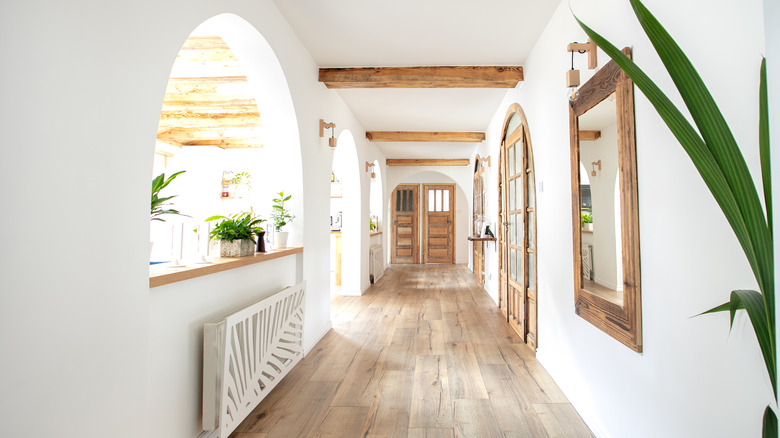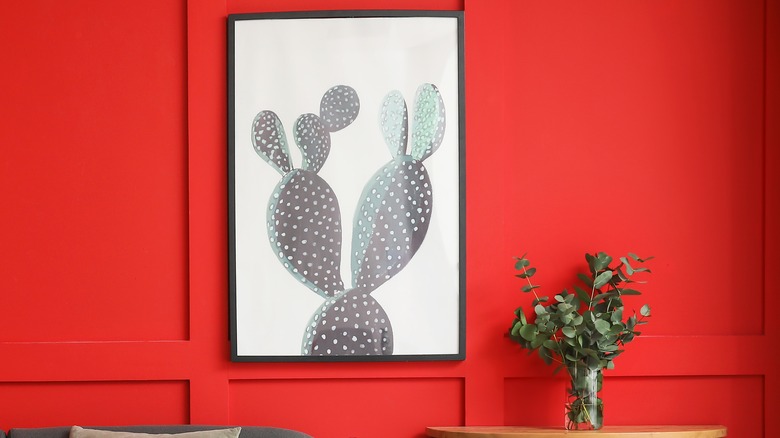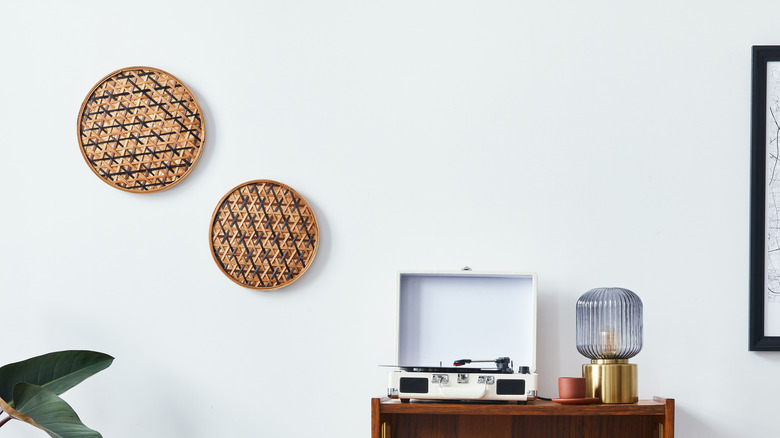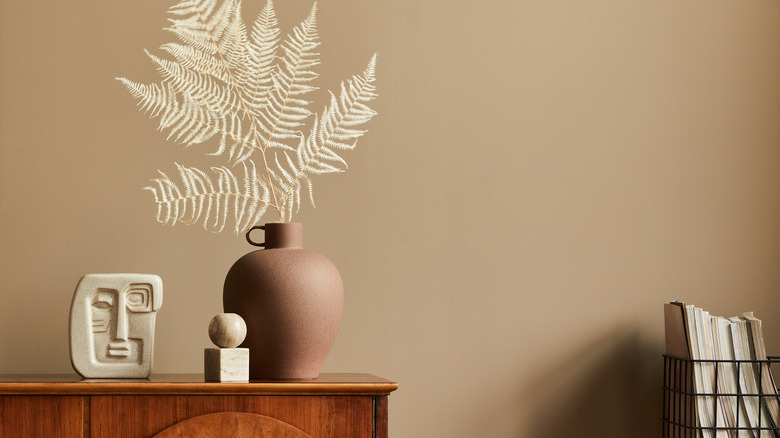The Colors You Should Never Paint Your Hallways
The hallway can be an often forgotten space in your home as the main rooms tend to be the primary focus of your design efforts. But that doesn't mean you can't give some attention to this small space. Hallways are a high-traffic area even though you're not hanging out in them, and that's exactly why this space presents a unique opportunity to make a big impact and can be a great location to experiment with color and have a little bit of fun with interior design. According to Apartment Therapy, a hallway can be the first impression of your home's décor and design.
Before you jump in with a random paint can, you should know that some color experts say you should never dye your hallways certain hues. Using color psychology, you can avoid painting your hallway a color that may create negative energy or make your home feel unwelcoming. But don't worry; there are also alternatives to produce a stunning hallway transformation. Here are some shades to avoid and alternatives to use.
Red feels like a warning
Red is a bold and passionate color. Though it was once a popular paint stain for full rooms, it's now more common as an accent color. This might be for the best if you're concerned about how your wall shades influence emotions.
Color psychologist Lee Chambers told Ideal Home that red could feel like a warning or a threat because the color is often associated with aggression, anger, and danger. These aren't the feelings you want when first walking into a house or through your home. Painting your walls red — even in a small space like the hallway — can make the area feel unwelcoming. Large swaths of bright red can also cause a jarring reaction.
But if you like this bold and unconventional hue, all you have to do is find the right shade. Stay away from vivid and saturated reds that can create overwhelming and unwelcoming feelings. Instead, use darker shades — think maroon, burgundy, or oxblood. Deeper, more muted, and earthier shades feel warmer and homier.
Plain white can be too stark
Many homeowners have heard that small spaces should be light and airy to make them feel larger. This is good advice, but it's also kind of dated. The thing about white is that it can be too stark and make a room feel too sterile. So even though you might be going for a neutral color to open up your space and create a canvas for other décors, you might accidentally create an unfriendly room with no personality.
This doesn't mean you can't use white in your hallway. After all, it's a neutral that provides a great base. However, for your walls, you don't want to choose a stark white. In an interview with Elle Decor, interior designer Matthew Boland suggests a warmer shade of white that feels comfortable and architectural.
Other designers agree that warmer, creamy shades are the best kinds of white because they're gentle and not too overpowering. Look for whites with subtle yellow or peach undertones. You want your hue to be calming and relaxing, not austere.
Strange undertones make the area feel off
Have you ever loved a color in the store, but when you brought it home and painted your wall, something about it just didn't feel right? Maybe it doesn't look good in your home's lighting, or perhaps it subtly clashes with the rest of your décor. On the other hand, the undertones you didn't notice might throw the aesthetics off. Either way, neutral colors often have unexpected undertones that make your paint color feel wrong, says The Spruce. For example, you may think you're bringing home a gorgeous gray or bright beige, but then, after you test it in the room, it has a weird green or pink tint that doesn't seem right.
Of course, this isn't to say you should shy away from neutral paint colors because when you find the right shade, it can be magical. The solution is to check the undertones. When you purchase your can of paint, the store can help you identify what undertones a color has. You can also do research and read reviews on the paint color you're thinking of to get an idea if it works well in your home. Better yet, take home some samples of your favorite shades and paint small areas of your wall. This way, you'll be able to pick a hue in no time.



